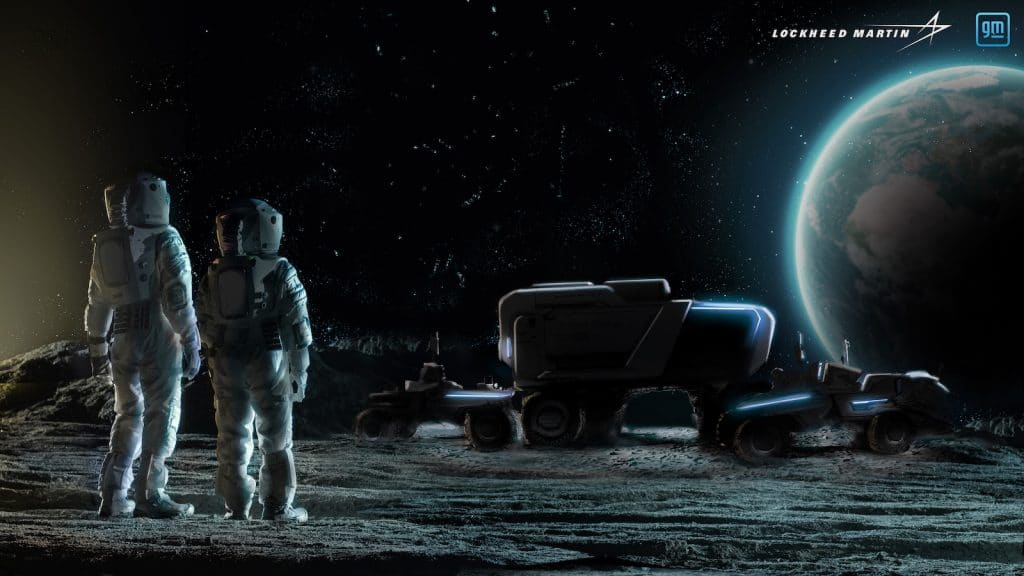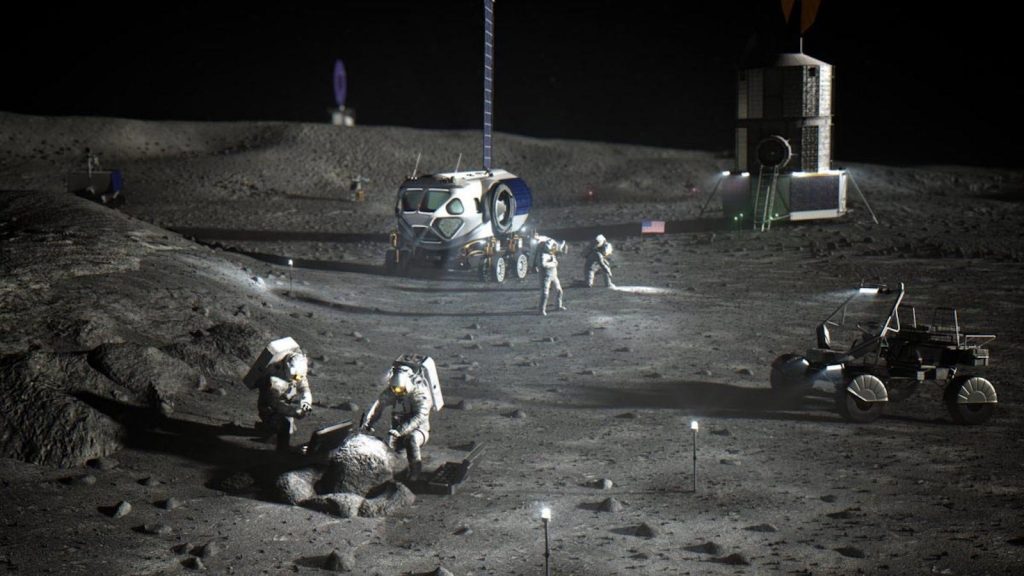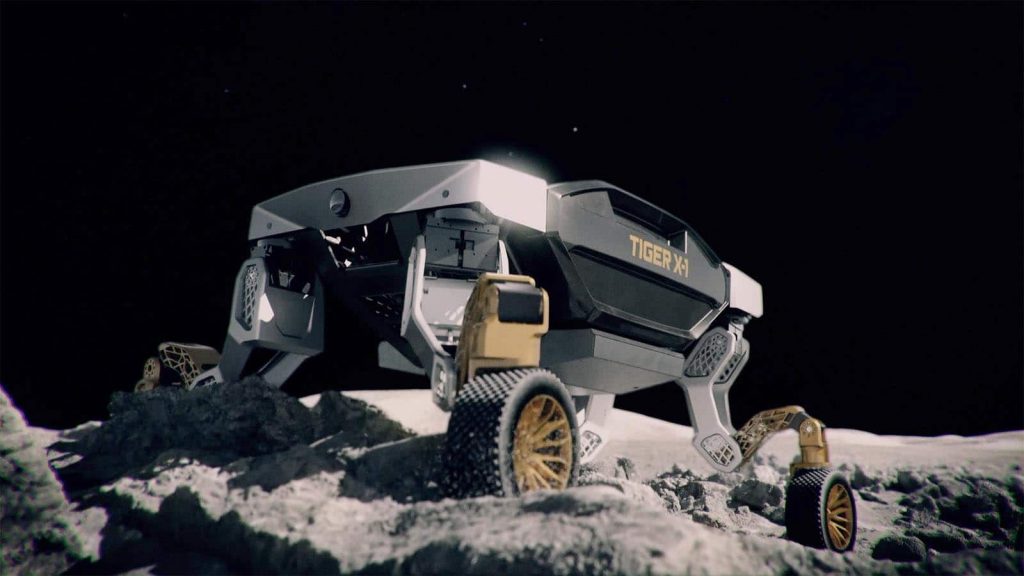General Motors is looking to go to the moon again.

The Detroit-based auto company, which produced the lunar rover for the Apollo 15 mission to the moon, is partnering with Lockheed Martin to develop and produce a “lunar terrain vehicle,” or LTV, for use by for NASA’s Artemis program.
The goal is to design and build a vehicle that allows astronauts explore more of the moon’s surface “than ever before,” according to GM officials. The LTV is just the first of several types of vehicles needed to help get astronauts across the moon’s surface.
“General Motors made history by applying advanced technologies and engineering to support the Lunar Rover Vehicle that the Apollo 15 astronauts drove on the Moon,” said Alan Wexler, senior vice president of Innovation and Growth at GM, in a statement.
“Working together with Lockheed Martin and their deep-space exploration expertise, we plan to support American astronauts on the Moon once again.”
EV expertise + experience = LTV job

GM enjoys the advantage of having done this before. It aided NASA in the development of the agency’s Apollo Moon program, having developed, tested, integrated and produced the inertial guidance and navigation systems for the series, in particular Apollo that put astronauts on the moon for the first time in 1969.
Additionally, it helped to develop the Apollo Lunar Roving Vehicle (LRV) for Apollo 15-17. The all-electric LRV never drove farther away from NASA’s based than 4.7 miles during its time on the moon’s surface. Fortunately, GM’s electric vehicle technology has advanced substantially since then.
The new vehicles aim to travel “significantly farther distances,” including the moon’s South Pole, which is cold and dark with severely rugged terrain. The vehicles will also need to be able to haul plenty of equipment in addition to people. NASA, according to reports, is looking for a vehicle to be able to travel about 600 miles on a charge and about 6,000 miles in a 42-day period.
The GMC Hummer SUT, which is set to debut later this year, recently went through some extreme winter testing, which may lend the company’s engineers some much-needed insight into how their current battery technology will fare in the far-colder reaches of space.

Not the only automaker with lunar plans
GM isn’t the only auto company working on lunar vehicles, in fact, it may be described as the latest to prepare a vehicle to be driven on the moon. Earlier this year, Hyundai unveiled its autonomous, all-electric TIGER X-1, which it claimed could be used on the moon.
However, Toyota’s been working diligently with the Japanese Aerospace Exploration Agency, or JAXA, to develop a new lunar rover for its moon mission in 2030. The automaker started the project in 2019 and proceeded quickly enough that it expressed hope that NASA would use its vehicle for the 2024 mission to the moon.
The Lunar Cruiser, as Toyota calls it, is a six-wheeled, hydrogen-powered rover, and it made it clear that while the project began as a JAXA-inspired vehicle, it hoped the U.S. space agency would take notice.
“We have now found a new ‘road,’ which is the moon. And for this new road, we will be able to make a new vehicle,” Takao Sato, project head of Toyota’s Lunar Exploration Mobility Works and a former interior design engineer who worked on the Prius hybrid, told Automotive News. “This is a dream for us.”

Audi also prepared a remote-controlled buggy to be used on the moon in 2016. The German maker supported a team of scientists chasing the Xprize, hoping to launch their mobile lab atop an Indian rocket. The goal was to have it travel nearly a quarter-million miles before landing on the Taurus Littrow Valley — which just happened to be the last place an Apollo moon mission landed nearly 50 years ago.
GM’s first lunar models
The company’s first LRVs were battery-powered four-wheelers that they stripped down as much as possible to permit them to be loaded onto a Saturn V rocket for launch. They also folded so they could be loaded in the cargo back of the Apollo mission’s Lunar Excursion Module, or LEM.
Power was provided by what was, for the time, a highly sophisticated 36-volt silver-zinc potassium hydroxide batteries. They weren’t rechargeable, which didn’t matter on a one-way mission like Apollo — that’s likely to change this time around. The key was the battery pack’s durability in the moon’s devastating environment. Maximum range was 57 miles, though the longest distance driven was 22.3 miles on Apollo 17 – with the astronauts never getting more than 4.7 miles from their LEM base.
The first vehicles were somewhat purpose-built models, but GM is expected to develop — in concert with Lockheed Martin — a variety of vehicles. Autonomous, self-driving systems will allow the rovers to prepare for human landings, provide commercial payload services, and enhance the range and utility of scientific payloads and experiments.Lockheed, which will be leading this effort, has produced vehicles used for every Mars mission thus far, including the 11 spacecraft that has carried the rovers used on the Martian surface to the Red Planet.